Join More Than 50,000+ Subscribers and get latest camera news and rumors
NEW CAMERA VIDEOS ON YOUTUBE
Download Our Android App
|
By admin, on August 5th, 2011
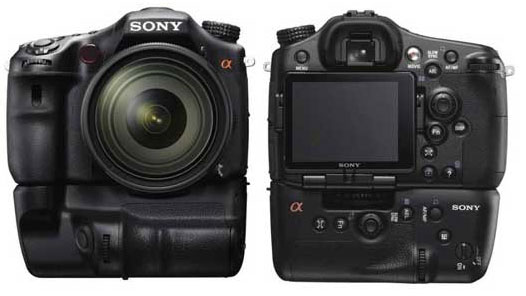
Sony Alpha A77 Specification
Sony a77 specs:
- 24.3 MP Exmor CMOS sensor
- ISO 100-16000, with an ISO 50 option
- Video recording at 1920 x 1080 60p/24p
- New Bionz image processor
- 19 points AF sensor with 11 cross sensors
- Continuous AF during video recording
- Built-in image stabilization
- 12 fps with continuous AF
- 1/8000 shutter speed
- New smart teleconverter function with 1.4x and 2.0x option
- OLED viewfinder with 100% coverage
- 921k tiltable LCD
- 11 picture modes and 15 picture effects
- Built-in flash
- GPS support
- 2D/3D sweep panorama function
- Face recognition
- Battery life: over 500 shots
- Weather sealed magnesium alloy body
- Weight: less than 700 g
- New option vertical grip
Sony a65 specs:
- Similar body design like the a77
- 15 points AF sensor with 3 cross sensors
- 10 fps
- Max shutter: 1/4000 sec
- Weight: less than 600 g
- Remaining specs similar to a77
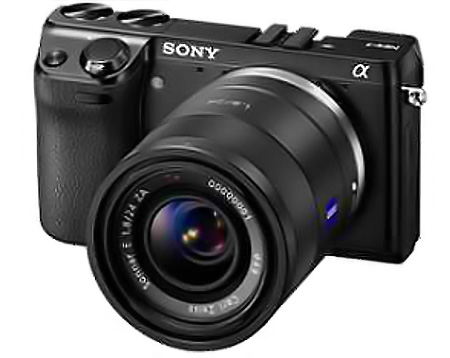
Sony NEX-7 specs:
- 24.3 MP Exmor sensor
- ISO range: 100-16000
- 1920×1080 60p/60i/24p AVCHD video recording
- XGA OLED viewfinder
- 3″ 921k dots TruBlack LCD display
- 10 fps
- HDR functionality
- Built-in flash
- Battery life: over 400 shots
- Magnesium alloy body
- Improved startup time and AF speed
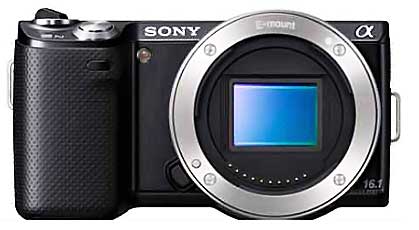
Sony NEX-5N specs:
- 16.1 MP Exmor senor
- Bionz processor
- max shutter speed; 1/4000
- ISO range: 100-25600
- 1920×1080 60p/60i/24p AVCHD video recording
- 10 fps
- 10x digital zoom
- 3D sweep panorama
- Anti dust system
- Programmable buttons
- Battery life: over 430 shots
- Weight: around 200 g
By admin, on December 24th, 2010
By admin, on November 18th, 2024
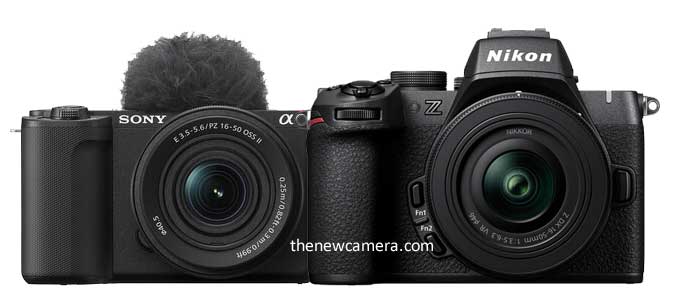
Let’s Compare the Sony ZV-E10 II and the Nikon Z50 II. The big question is, which one is better for your own personal requirements and your budget too? So, we are going to compare the major differences between the two, and you have to keep your requirements in mind. Every time we compare the major specs of the cameras, here we are also analyzing that particular spec in our conclusion and verdict part. Jump in and find out the best camera for you!
Nikon Z50 II vs Canon R10 | Nikon Z50 II vs Sony A6700
Design and Build
| Feature |
Nikon Z50 II |
Sony ZV-E10 II |
| Lens Mount |
Nikon Z |
Sony E |
| Body Material |
Magnesium Alloy |
Polycarbonate with Metal Components |
| Weight (With Battery) |
Approx. 450 g |
377 g |
| Dimensions (W x H x D) |
126.5 x 93.5 x 60 mm |
114.8 x 67.5 x 54.2 mm |
| Monitor Display |
3.2″ 1.04M-Dot Tilting Touchscreen LCD |
3.0″ 1.03M-Dot Articulating Touchscreen LCD |
| Viewfinder |
0.39″ OLED, 2.36M-Dot, 100% coverage |
No Viewfinder |
| Weather-Sealing |
Yes |
No |
| Built-In ND Filter |
No |
No |
| Hot Shoe Mount |
Yes |
Yes (Multi-Interface Shoe for Accessories) |
Design – Compact Creator vs Rugged Explore
These two cameras are completely different specifically design-wise. The Sony ZV-E10 Mark II camera does have a small hand grip for shooting occasionally, but as we know since it belongs to the SONY ZV Series has been designed for content creation and cinematography. It has an ultra-compact body with fewer controls. The camera also doesn’t have any weather sealing over it neither the EVF.
The Nikon Z50 Mark II HYBRID camera has an electronic viewfinder with 1000 nits brightness. It also has a very deep and redesigned hand grip, even better than its predecessor. At the same time, the body is weather-sealed, so you can shoot in uncontrolled light environments without any issues.
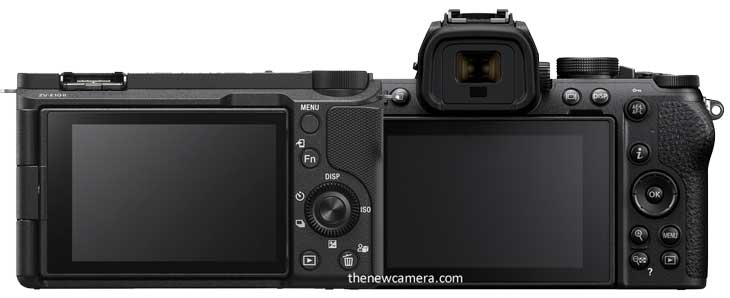
Best Camera as per Design Conclusion / Verdict
For portability, flexibility, and easier controls, the Sony ZV-E10 II leads. Again, for durability, extensive manual controls, and outdoor adventure, it is recommended to use the Nikon Z50 II camera.
Imaging Capabilities
| Feature |
Nikon Z50 II |
Sony ZV-E10 II |
| Sensor Type and Size |
APS-C CMOS, 23.5 x 15.7 mm |
APS-C CMOS, 23.3 x 15.5 mm |
| Resolution |
20.9 MP |
26 MP |
| ISO Sensitivity (Photo) |
100-51,200 (Expandable to 204,800) |
100-32,000 (Expandable to 50-102,400) |
| Continuous Shooting Speed |
11 fps 200 RAW/ 15 fps / 30 Fps Jpeg |
Up to 11 fps for 59 RAW / 1000 JPEG Frames |
| Autofocus Points (Photo) |
209 Phase-Detection Points |
759 Phase-Detection Points |
| Low-Light AF Sensitivity |
-9 EV |
-3 EV |
| Image Stabilization |
VR for Video only |
Digital + GYRO (Video Only) |
| Aspect Ratios Available |
3:2, 16:9 |
3:2, 16:9 |
| Image File Formats |
JPEG, NEF (RAW) |
JPEG, HEIF, Raw |
High Resolution vs Low Light Sensitivity
As we know, the Sony ZV-E10 II camera features a 26-megapixel CMOS sensor, while the Nikon Z50 II has a 20.9-megapixel sensor. Due to the resolution difference, the Sony ZV-E10 II camera captures more detail at the base ISO range starting from ISO 100-400, and it’s more recommended for landscape photography, portraits, and product shots where one wants to harness the maximum amount of detail possible from a camera.
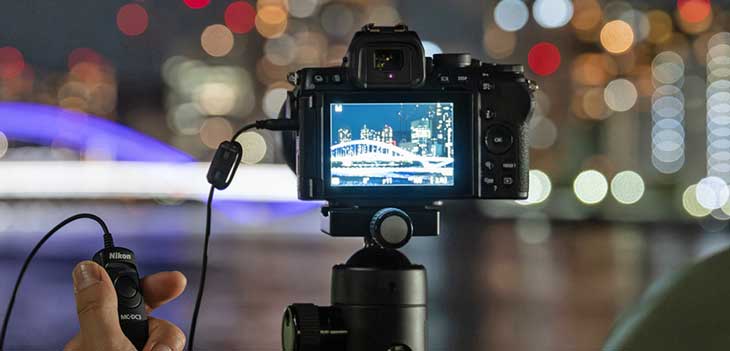
On the other hand, we have the Nikon Z50 II camera with a 20.9-megapixel sensor. Due to the lower resolution, we have large photodiodes inside this camera, which enables more incoming light to be absorbed, resulting in cleaner images at higher ISOs. For example, if you are shooting at ISO 1600 or 3200, the Z50 II camera will provide you with cleaner images compared to he compatitor.
Sensor Image Quality – Conclusion / Verdict
When shooting in uncontrolled light environments, it is highly recommended that you get the Nikon Z50 II camera, specifically when you are shooting wildlife where your subject can be at any place or time, then it’s recommended to have cameras like Z50 II that can capture better details or images at higher ISO ranges.
Autofocus: AI Precision vs Autofocus Consistency
Sony ZV-E10 II camera features 759 phase-detection autofocus points. Not only does the number of autofocus points matter, but the autofocus algorithm of the Sony ZV-E10 II camera is powered by an advanced AI AF algorithm, so it enhances the overall autofocus experience 2x better than what it was in the Sony A6400 camera.
And Nikon Z50 Mark II also arrives with an upgraded autofocus system. As per Nikon’s press text, the Z50 Mark II camera uses the same autofocus algorithm that we have seen in the Nikon Z8 camera. Having said that, it’s a major improvement in Nikon APS-C lineup, and without a doubt, you can feel it. For example, even at 30 frames per second when you are using Nikon Z50 II at C30 mode, the camera does autofocus and auto-exposure calculation in every frame. That is a clear indication of how fast the Z50 Mark II autofocus calculation has now become.
The good thing about Nikon Z50 Mark II is, apart from improved autofocus modes, the camera does autofocus sensitivity up to -9 EV, whereas in Sony it’s limited to -3 to -4 EV depending upon the type of lenses you are using in both the cameras.
30 FPS Continuous shooting speed, the Nikon Z50 II camera features continuous shooting upto 30 FPS as well as Pre-Brust modes of 0.35ses, .05 Ses, and 1.0 Sec that captures a MAX of 30 Jpegs before you hit the shutter, one of the only cameras that offer pre-burst mode in this price segment.
Best AutoFocus – Conclusion / Verdict
Now, even though the Z50 II autofocus is much improved, for action-packed VIDEOS, it is highly recommended to use the Sony ZV-E10 Mark II camera 😉 . But for shooting action-packed images at higher frame rates, Z50 is the best option where you have multiple options like shooting with a mechanical shutter or electronic, at the very same time, the camera does autofocus and auto-exposure calculation all the way, even at 30 fps. That’s the Nikon Z50 II recommended for shooting action-packed images when we have these two options in front.
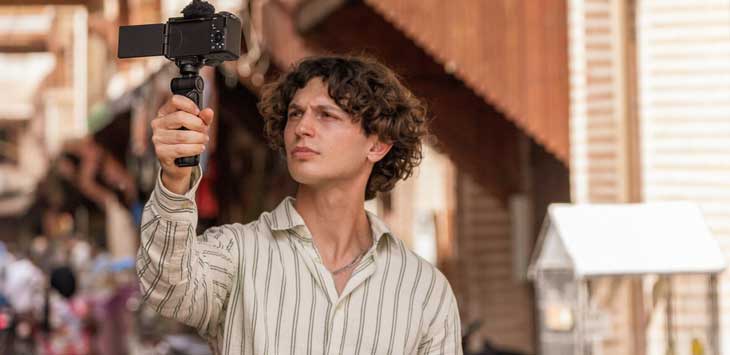
Electronic Stabilization vs Gyro
None of the cameras has Sensor-Shift IS [No Mechnical], The Sony ZV-E10 II camera uses GYRO which also includes active image stabilization. The Active IS works flawlessly but needs wide lenses to crop and apply the steb. If you have that much wider better to use GYRO. Nikon Z50 Mark II camera uses electronic stabilization in video mode [E-VR], which is of course not as good as we have in the Sony ZV-E10 II, but yeah, it is effective to some extent.
Best Camera for Handheld Shooting – Conclusion / Verdict
Since none of them have any kind of mechanical stabilization inside them, and if you talk about electronic image stabilization, then Sony excels while using the active mode as well as an option to use gyro-based image stabilization.
Video Capabilities
| Feature |
Nikon Z50 II |
Sony ZV-E10 II |
| Internal Recording Modes |
H.264/H.265 8/10-Bit |
XAVC HS/S 4:2:2 10-Bit, XAVC S 8-Bit, XAVC S-I 10-Bit |
Max 4K Res.
|
UHD 4K 60p 1.5X Crop |
UHD 4K 60p 1.04X Crop |
| High-Speed Recording |
1920 x 1080 up to 120 fps |
1080p up to 240 fps |
| Recording Limit |
Approx. 121 mins |
No recording limit |
| Gamma Profiles |
N Log |
S-Cinetone, S-Log3 |
Luts
|
RED-Luts |
Picture Profiles |
| Built-In Microphone |
Mono |
Stereo |
| Audio Inputs and Outputs |
Microphone and Headphone |
Microphone input, Headphone output |
| Focus Points (Video) |
209 Phase-Detection Points |
495 Phase-Detection Points |
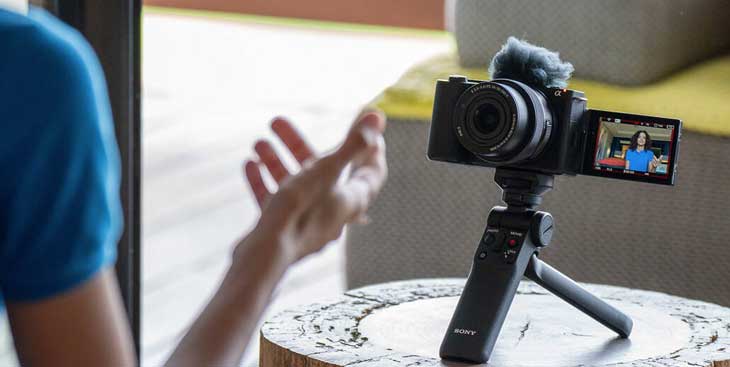
Color Science: Grading Playground vs. Ready-to-Use Output
Sony ZV-E10 II camera is built for cinematic video and content creation purposes. It supports 4K video recording up to 60 frames per second with a negligible crop of 1.03x. At the same time, you can record your videos in 10-bit 4:2:2 internally. It also supports professional-grade S-Log3 and S-Cinetone, which professionals generally prefer to use.
The Sony ZV-E10 II camera also features a gyro-based image stabilization system backed by Active Mode, so depending on the type of lens you have, you can utilize any of these image stabilization methods.
Yes, we do have Product Showcase Mode and Active Framing, ideal for content creators shooting solo content. Additionally, the battery life and ultra-compact body make it highly portable.

Nikon Z50 II camera features 4K 60p recording with a 1.5x crop, which may or may not suit many professionals out there. However, the good news is that the Nikon Z50 II features natural color science, inspired by RED camera makers. The RED-like color science is now available in the Z50 II camera. Additionally, the camera also supports waveform function, which professionals will love.
If you make talking-head videos while sitting in your room, you can use the newly developed Product Review Mode or Product Showcase Mode of the Nikon camera. However, the image stabilization is not as effective as that of Sony’s.
If you’re a professional cinematographer, short filmmaker, or story trailer, you’ll appreciate the RED-like color science present in the Z50 II. Despite the crop in 4K 60p, if you’re okay with it, you’ll benefit from waveform support, which is highly essential for professional storytelling.
The Sony ZV-E10 II camera, designed for video creation, includes all the bells and whistles you’d wish for in a professional video camera.
Power and Connectivity
| Feature |
Nikon Z50 II |
Sony ZV-E10 II |
| Battery Type |
EN-EL25a, Approx. 320 Shots |
NP-FZ100, Approx. 610 Shots |
| USB-C for Power/Charging |
Yes |
Yes |
| Media/Memory Card Slot |
Single SD Slot (UHS-II) |
Single SD Slot (UHS-II) |
| Wireless |
Wi-Fi, Bluetooth |
Wi-Fi (2.4/5 GHz), Bluetooth 4.2 |
| Mobile App Compatibility |
SnapBridge |
Creators’ App (Android & iOS) |
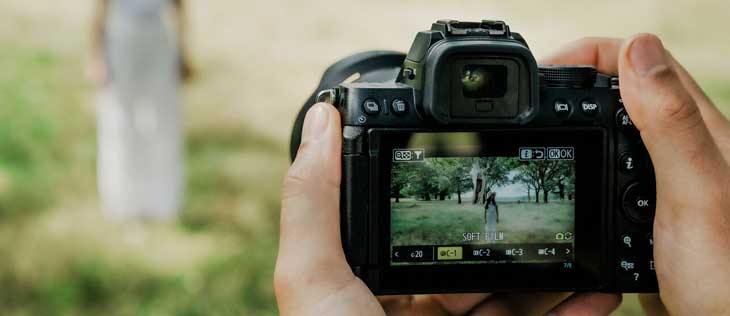
Nikon Z50 Mark II: Weather-Sealed BODY and Low-Light Sensor
In conclusion, the Sony ZV-E10 II camera and the Nikon Z50 Mark 2 camera are made for different types of users. If you look carefully, without a doubt, the Nikon Z50 Mark 2 camera has been made with a deep hand grip, EVF and a rugged body. The camera also features excellent low-light performance with its 20.9 MP sensor and, without the option of an optical low-pass filter, it captures decent images at base ISO. This makes it an ideal camera for wildlife photography, event photography, and even travel photography where you have a completely uncontrolled set of environments and lights.
Sony ZV-E10 II: Best for HANDHELD Content Creators
The Sony ZV-E10 II camera is a content creator’s powerhouse that offers 4K 60 FPS recording, which is almost uncropped since it has only a 1.03x crop, which is unnoticeable. You can record 10-bit videos internally, powered by S-Log3 and S-Cinetone. One of the best things about the Sony camera is that you are getting active image stabilization backed by gyro-based stabilization, ideal for those who love to shoot their content on the go. It will provide completely stable, high-quality footage. Additional features include product showcase mode, active framing, and a three-capsule microphone to record high-quality audio directly in the camera. More or less, it is highly recommended for content creators.
Sony ZV-E10 II: For Photography?
Yes, you can occasionally use the ZV-E10 II camera for photography purposes to get a resolution advantage, but it is highly recommended that you use this camera with proper lighting conditions to extract the maximum amount of detail possible.
Nikon Z50 Mark II: Cinematographers and StoryTellers
The Nikon Z50 Mark II camera does have some exceptional advantages in video recording modes that should not be overlooked. It captures clean and noise-free videos at higher ISO levels and has been inspired by RED cinema profiles. Moreover, it also features waveform capability with a weather-sealed body. So if you are a short film storyteller or beginner cinematographer, you should consider these factors before getting your first camera for professional cinematography purposes.
Sony ZV-E10 II from B&H Store | Amazon.com
Sony ZV-E10 II Recommended for:
- Casual Clicks
- Wedding Video
- Vlogging / YouTube Content Creation
- Solo Content Creation (Active Framing & Product Showcase Mode)
- Cinematic SOLO Videography (with S-Log3 & S-Cinetone)
- Casual Travel Videography
- Compact, On-the-Go Shooting
Get a Nikon Z50 Mark II camera from the B&H Store | Amazon.com
Nikon Z50 II Recommended for:
- Low-Light Photography
- Wildlife Photography
- Wedding Photography
- Event Photography (due to clean high ISO performance)
- Documentary Videography
- Cinematic Filmmaking (low light, RED-inspired color science)
- Rugged Outdoor Photography (weather-sealed body)
- Travel Photography in Challenging Environments
- High ISO Videography
- Professional Video Shoots (Waveform & RED LUTs)
Support us – Use or affiliate link Amazon.com | B&H Store for the next purchase u make – it helps us 🙂
Follow us on our social pages FACEBOOK | TWITTER | INSTAGRAM to get live Camera News +
By admin, on November 13th, 2024
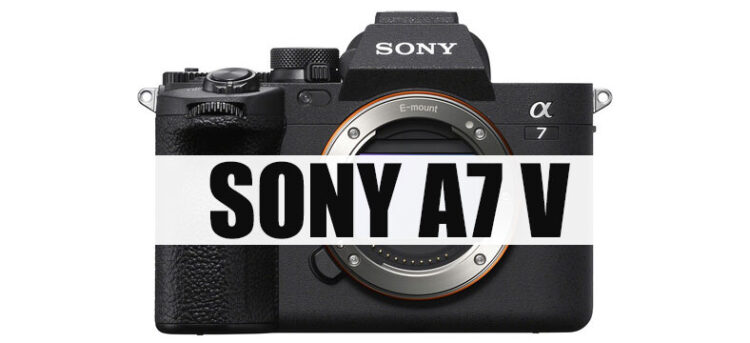
Let’s talk about what we know so far regarding the Sony A7V camera, We were expecting its arrival a bit early in November, but Sony disappointed us with the Announcement of the A1 Mk II. The Sony A7 V camera is overdue for an announcement, but despite that you have to wait a few months more, it looks like Sony is updating their cameras strictly according to their update schedule.
If they strictly follow their schedule, the next announcement from Sony will most likely be a cinema camera, probably the Sony FX3 Mark II, or the Sony A7S IV camera.
But when will the Sony A7V camera arrive? According to the current rumors, the Sony A7V camera is expected to arrive on or before April 2025 (90% chance). However, if delayed, the announcement could be stretched to October 2025.
As for the core specifications I was expecting from the Sony A7V camera, the arrival of a 33-megapixel stacked sensor, the presence of an AI chip, and a new generation of the BIONZ X image processor. But, Recent rumors suggest that Sony is testing prototypes with the IMX366 sensor, which has a 44-megapixel resolution. The good thing about this sensor is that despite being a non-stacked sensor, the readout speed is very fast. The camera will be paired with Sony’s latest BIONZ X image processor and AI chip. This is not the first time we have gotten hints of a 44 Mp sensor, check here Unbelievable! Sony A7 V May Feature a 44-Megapixel Sensor
This looks impressive if the camera arrives with Sony’s latest IMX366 sensor. It will surely raise the competition level. Again, the model will have a decent price increase, and it will likely fall in the same category as the existing Canon R5 camera.
Follow us on our social pages FACEBOOK | TWITTER | INSTAGRAM, If you have time –>see more Sony Alpha Rumor
By admin, on November 12th, 2024
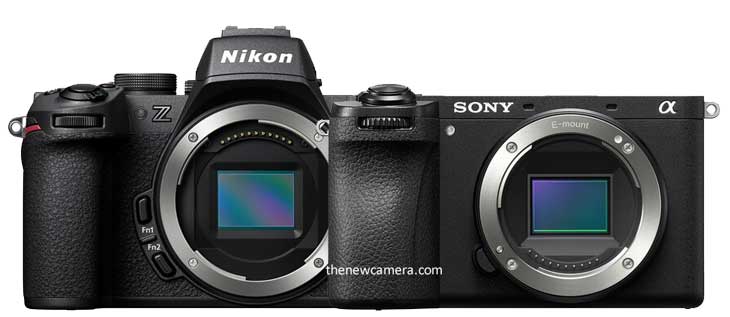
Which camera is better for capturing images or recording content, the Nikon Z50 II or the Sony A6700? In this specification comparison, we will focus on the major differences between these two cameras. Besides the key feature differences, these cameras also vary in price, so when selecting your camera, consider all these factors before making a purchase.
Initially, in the design part, one thing I like about the Sony A6700 camera is its larger battery life. The Sony A6700 uses an NP-FZ100 battery, so you get approximately 2x battery life compared to the Nikon Z50 Mark II camera. However, the Z50 II has an upgraded Bluetooth antenna, which allows for faster transfer speeds. Another good feature introduced in the Z50 II is the silent transfer mode, enabling you to use your camera for shooting or capturing video while it silently transfers your images or videos in the background to your smartphone or PC. Although there aren’t many differences in the design patterns, both cameras are highly usable for photographers and content creators in terms of design and build
Nikon Z50 II vs Canon R10
Table 1: Design Comparison
| Feature |
Nikon Z50 II |
Sony A6700 |
| Lens Mount |
Nikon Z |
Sony E |
| Body Dimensions (W x H x D) |
5 x 3.8 x 2.6 in (127 x 96.8 x 66.5 mm) |
4.8 x 2.7 x 3 in (122 x 69 x 75.1 mm) |
| Weight |
17.46 oz / 495 g (Body Only) |
1.1 lb / 493 g (With Battery, Recording Media) |
| Material |
Magnesium Alloy |
Magnesium Alloy |
| Battery Type |
EN-EL25a or EN-EL25 (Approx. 230 Shots) |
NP-FZ100 (Approx. 550 Shots) |
| Weather-Sealing |
Yes |
Yes |
| Operating Temperature |
32 to 104°F / 0 to 40°C |
32 to 104°F / 0 to 40°C |
| Connectivity Ports |
USB-C (Power/Data), Micro-HDMI, 3.5 mm Mic & Headphone Jacks |
USB-C (Power/Data), Micro-HDMI, 3.5 mm Mic & Headphone Jacks |
| Memory Card Slot |
Single SD/SDHC/SDXC (UHS-II) |
Single SD/SDHC/SDXC (UHS-II) |
| Wireless |
Wi-Fi 5, Bluetooth 5.0 |
Wi-Fi 5 (2.4/5 GHz), Bluetooth 4.2 |
| GPS |
Via Connected Smartphone |
Via Connected Smartphone |
In the imaging comparison, we have compared the two different sensors and their specs. The big advantage of the Nikon Z50 II camera’s sensor—and a major reason why Nikon continues using it in their mirrorless lineup—is its strong low-light performance. The sensor pixel area is larger than that of the A6700, so even without optical stabilization, it captures more detail in low-light environments. Additionally, the Z50 II has an expanded ISO range that offers one more stop than the A6700. With these core differences, it’s clear that the Nikon Z50 II will perform better in low-light or uncontrolled lighting environments compared to the A6700.
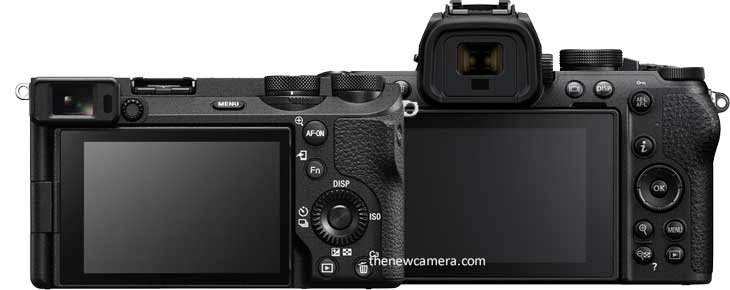
Resolution Advantage of Sony A6700:
Now, with the Sony A6700 camera, we are getting a resolution advantage, but will it work in actual conditions? We will test and find out that capturing images near the base ISO range will bring more details from Sony with OLPF or with a 20.9 MP sensor without OLPF (Optical low-pass filter).
Table 2: Imaging Comparison
| Feature |
Nikon Z50 II |
Sony A6700 |
| Sensor Resolution |
Actual: 21.51 MP, Effective: 20.9 MP (5568 x 3712) |
Actual: 27 MP, Effective: 26 MP (6192 x 4128) |
| Sensor Type |
APS-C CMOS, 23.5 x 15.7 mm |
APS-C CMOS, 23.3 x 15.5 mm |
Sensor Pixel Area
|
4.22µ |
3.76µ |
Low pass Fiter
|
No |
Yes |
| Sensor Crop Factor |
1.5x, 1.2x in some video modes |
1.5x, 1.6x in some video modes |
| Image Stabilization |
Digital (Video Only) |
Sensor-Shift, 5-Axis |
| ISO Range (Photo) |
100 to 51,200 (Expandable: 100 to 204,800) |
100 to 32,000 (Extended: 50 to 102,400) |
| ISO Range (Video) |
100 to 25,600 |
100 to 32,000 |
| Continuous Shooting Speed |
Up to 11 fps (Raw) / 30 fps (JPEG) |
Up to 11 fps (26 MP) |
Pre- burst
|
Yes |
No |
| White Balance Range |
2500 to 10,000K |
2500 to 9900K |
| Autofocus Points |
231 Phase & Contrast Detection |
759 Phase Detection (Photo), 495 (Video) |
| AF Sensitivity |
-9 to +19 EV |
-3 to +20 EV |
| Image File Format |
HEIF, JPEG, Raw |
HEIF, JPEG, Raw |
| Aspect Ratio Options |
3:2, 1:1, 16:9 |
3:2, 4:3, 16:9, 1:1 |
| Bit Depth |
14-Bit |
14-Bit |
Continuous Shooting Speed:
Another significant difference is continuous shooting speed. Both cameras feature up to 11 fps with their mechanical shutters, but Nikon allows up to 30 fps with its electronic shutter. And in A6700 we don’t have the support of an Electronic shutter in Brust mode, so the maximum speed we are getting in A6700 is 11 Fps.
Buffer Memory and Pre-Burst Capture Mode:
Comparing buffer memory, the Z50 II can store up to 200 RAW files in a single shot, whereas the A6700 can store approximately 50. Now with the help of Pre Brust capture mode feature in the Z50 II is that it engages its buffer memory before shooting starts. This means that when you capture an image, the camera saves a stack of images even before the shutter is pressed, ensuring you don’t miss key moments.
Low-Light Autofocus Sensitivity:
Another strength is the Z50 II’s low-light AF sensitivity, which reaches -9 EV, compared to -3 EV on the Sony A6700.
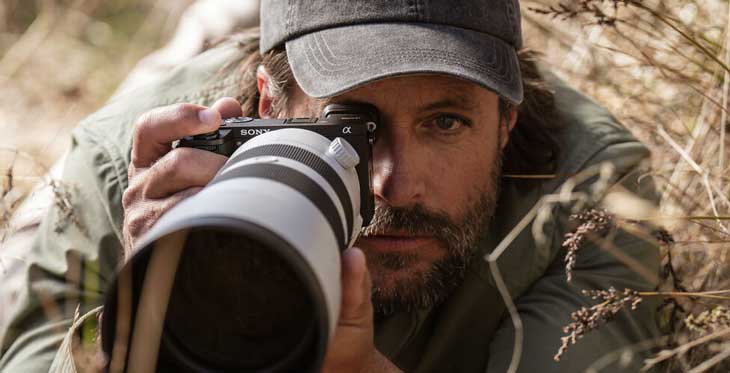
Autofocus System:
The Sony A6700 has 759 phase-detect AF points for autofocus, while the Z50 II is limited to 231 points. This gives the A6700 a more advanced autofocus system, but Nikon has closed the gap by introducing similar AF algorithms to those seen in the Nikon Z8. So, while Sony may still have the edge in AF, the Z50 II’s performance now comes very close.
Image Stabilization
Sony A6700 camera features sensor-shift Image stabilization as well as GYRO, so if you are shooting still images of video the Sony A6700 camera is more helpful to you compared to Nikon Z50 II without IBIS and normal E- VR mode.
Best Camera for Different Environments:
So, if you’re working in a controlled lighting environment, the Sony A6700 may be more useful. However, if you’re often in uncontrolled or outdoor environments—like wildlife photography where lighting and subject positions vary—then a camera that performs better in low-light conditions may be preferable, making the Z50 II a better choice.
Table 3: Video Comparison
| Feature |
Nikon Z50 II |
Sony A6700 |
| Internal Recording Modes |
H.264/H.265 8/10-Bit |
XAVC HS/S 4:2:2 10-Bit, XAVC S 8-Bit, XAVC S-I 10-Bit |
| Max Resolution & Frame Rate |
UHD 4K 30p Uncropped |
UHD 4K 30p Uncropped |
| |
UHD 4K 60p 1.5X Crop |
UHD 4K 60p 1.04X Crop |
| |
NA |
UHD 4k 120p 1.58x crop |
| High-Speed Recording |
1920 x 1080 up to 120 fps |
1080p up to 240 fps |
| External Recording |
HDMI 4K (Unspecified Frame Rate) |
HDMI 4K at up to 59.94 fps, HD up to 59.94 fps |
| Slow/Fast Motion |
Slow Motion Only |
Yes |
| Recording Limit |
Up to 125 Minutes |
Unlimited |
| Gamma Curve |
HDR-HLG, Nikon N-Log |
HDR-HLG, S Cinetone, S-Log 3 |
Waveform
|
Yes |
No |
Product showcase Mode
|
Yes |
Yes |
Auto Framing
|
No |
Yes |
| Built-In Microphone |
Stereo |
Stereo |
Image Stabilization
|
VR |
IBIS / GYRO |
| Audio Recording Format |
MOV: 24-Bit 48 kHz LPCM, MP4: 16-Bit 48 kHz AAC |
XAVC: 2-Channel 16-Bit 48 kHz LPCM |
| Headphone & Mic Jacks |
Yes (3.5 mm) |
Yes (3.5 mm) |
| Video I/O |
Micro-HDMI |
Micro-HDMI |
This side-by-side comparison should help you see each camera’s strengths and features in detail. Now its time for a recommendation
Sony A6700: Higher Frame Rates and Minimal Crop in 4K
In the video comparison tables above clearly shows that with the Sony A6700 camera, we are getting higher frame rates up to 120 fps in 4K. Although we have to face significant crop in that mode, at the same time, in the Nikon Z50 Mark II camera, even at 4K 60 fps, we have to face a 1.5X crop, whereas in the Sony A6700 camera, the crop at 4K 60p is minimal, at only 1.04x. So more or less, if we talk about the usability of frame rates, we are getting more advanced specifications in the Sony A6700 camera.
Sony A6700: Superior Gyro-Based Image Stabilization for On-the-Go Shooting
Another significant advantage of the Sony A6700 camera is the presence of a gyro-based image stabilization system, so if you are hand-holding the camera and creating content on the go, then the most suitable camera for you is again the Sony A6700 camera.
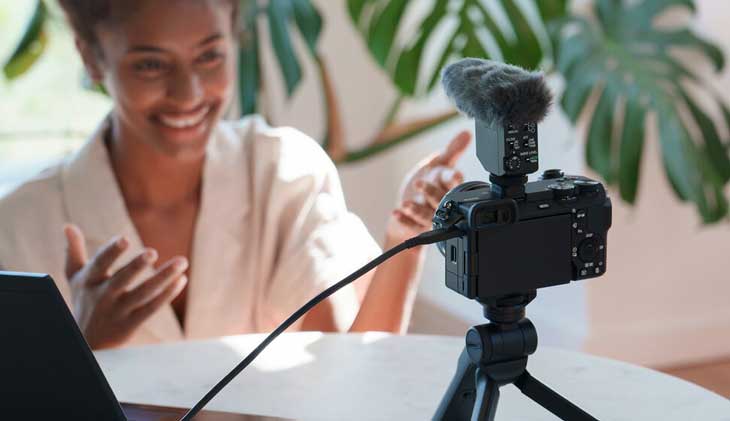
Sony A6700: High Frame Rate Options for Slow-Motion and Content Creation
Again, for dance videos or creating reels that need higher frame rates, the Sony A6700 camera allows you to capture full HD videos up to 240 fps for creating super slow-motion videos. So if you talk about frame rates or gyro-based image stabilization, you are getting all that in the Sony A6700 camera, which also supports 10-bit internal recording with S-Log2, S-Log3, and Hybrid Log Gamma, so you can extract as much detail as you require for a given scene.

Nikon Z50 II: Exceptional Low-Light Performance and Professional Cinematography Features
Now, when should you buy the Nikon Z50 Mark II camera? Since the Nikon Z50 II camera features an ultra-low-light-sensitive sensor, if you are a short filmmaker and need a camera that performs exceptionally well under uncontrolled lighting conditions along with support for professional cinematography using RAW LUTs that the camera includes, then new RAW LUTs with the Z50 II camera may be added with updates in the future. Above all, you are also getting waveform support that will help you precisely control exposure, allowing you to rearrange elements to achieve optimal exposure. So if you are professionally involved in creating short films under uncontrolled lighting conditions, then the most recommended camera is the Nikon Z50 II.
Get a Sony A6700 Camera from B&H Store and Amazon.com
Sony A6700 Recommended for:
- Portrait Photography
- Landscape Photography
- Street Photography
- Event Photography
- Sports Photography
- Vlogging
- YouTube Content Creation
- Product Photography
- Cinematic Videography (with high frame rates)
- Casual Travel Videography
- Action/Adventure Videography
Get a Nikon Z50 Mark II camera from the B&H Store | Amazon.com
Nikon Z50 II Recommended for:
- Low-Light Photography
- Wildlife Photography
- Documentary Videography
- Cinematic Filmmaking (low light)
Support us – Use or affiliate link Amazon.com | B&H Store for the next purchase u make – it helps us 🙂
Follow us on our social pages FACEBOOK | TWITTER | INSTAGRAM to get live Camera News +
By admin, on November 2nd, 2024

Sony A1 Mark II camera leaked image surfaced over the web, via SAR. Very soon we will have an official announcement of the upcoming camera.
But even more interesting, is Sony done with 2024 announcements or do we still have some surprises left? although I am waiting for the Sony A7S III camera and FX3 II, let me know which models or waiting for.
The camera we are expecting to Arrive from Sony
- Sony A7 V [Early 2025 with a 44.5Mp sensor as per rumors]
- Sony FX3 II
- Sony A7S IV [Sony’s next announcement after A1 Mark II]
- Sony Alpha A II [Confirmed for Sony Nov 19 announcement ]
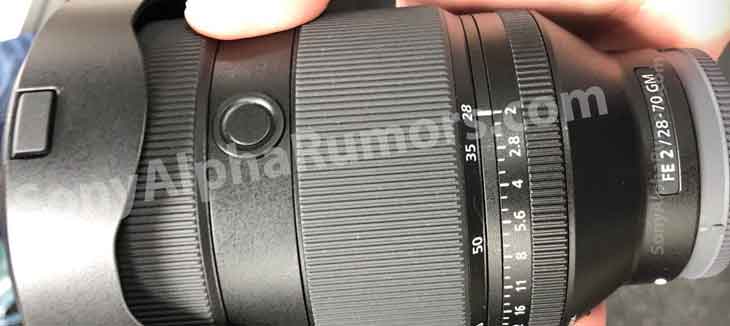
Follow us on our social pages FACEBOOK | TWITTER | INSTAGRAM, If you have time –>see more Sony Alpha Rumor
source SAR website
By admin, on October 25th, 2024
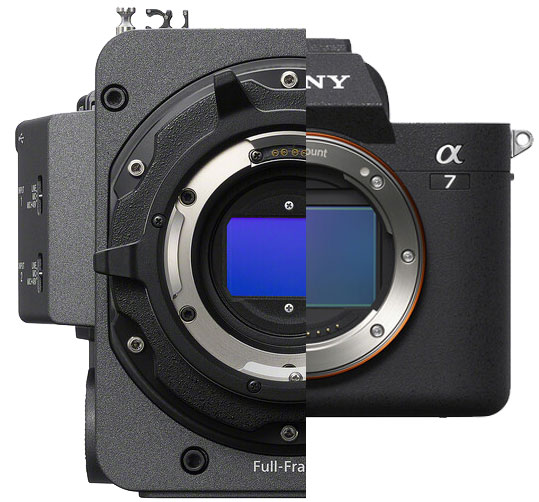
According to the latest rumors, Sony’s announcement will happen on November 19, 2024. As we posted earlier, we are expecting the arrival of the Sony A7 V camera, other rumor mills first said Sony Alpha A1 Mark II and now they are silent 🙂
The camera we are expecting to Arrive from Sony
- Sony A7 V
- Sony FX3 II
- Sony A7S IV
- Sony Alpha A II
Let me know in the comments which camera you’re most excited to see.
Check out the latest rumors
Sony A7 V or Something Else ? Sony Nov 2024 Announcement
Sony Next Big Announcement on November 2024
Follow us on our social pages FACEBOOK | TWITTER | INSTAGRAM, If you have time –>see more Sony Alpha Rumor
source SAR
|
KEEP THIS BLOG ALIVE - Support New Camera Buy Canon Lenses, Buy Music CD or Digital Camera at amazon it helps this site, and you do not pay anything extra, it is just a way to help support this site.

|
























